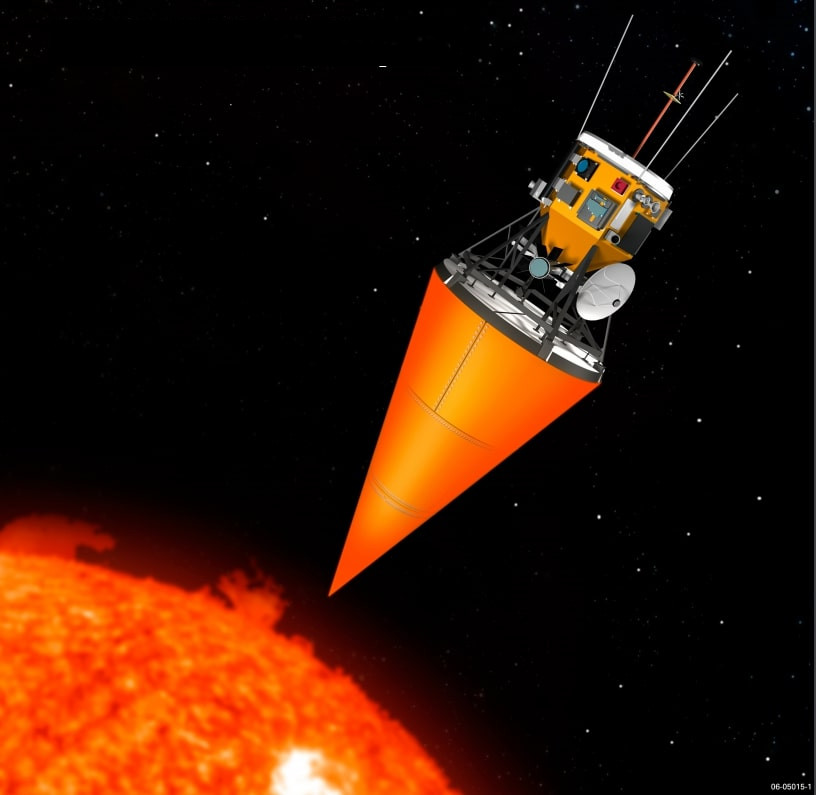The Parker Solar Probe concept originates from the predecessor Solar Orbiter project conceived in the 1990s. Similar in design and objectives, the Solar Probe mission served as one of the centerpieces of the Outer Planet/Solar Probe (OPSP) program formulated by NASA.

Photo Credit: NASA and JHU Applied Physics Lab
The original Solar Probe trajectory design used a gravity assist from Jupiter to enter a polar orbit which dropped almost directly toward the Sun. While this plan would have explored the important solar poles and ventured even closer to the surface than Parker Solar Probe (~3 R☉), the extreme variation in solar irradiance made for an expensive mission. The trip to Jupiter also made it a long mission at 3 1⁄2 years to first solar perihelion and 8 years to second, with only several hours of data collection at closest approach.
In the early 2010s, plans for the Solar Probe mission were incorporated into the lower-cost Solar Probe Plus. The redesigned mission uses multiple Venus gravity assists for a more direct flight path into an equatorial orbit which can be powered by solar panels. It also has a higher perihelion (~9 R☉), reducing the demands on the thermal protection system.
